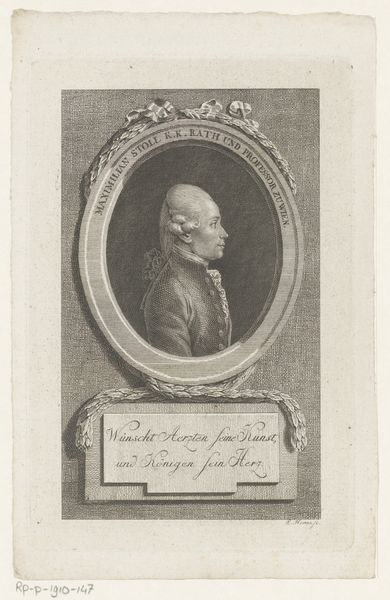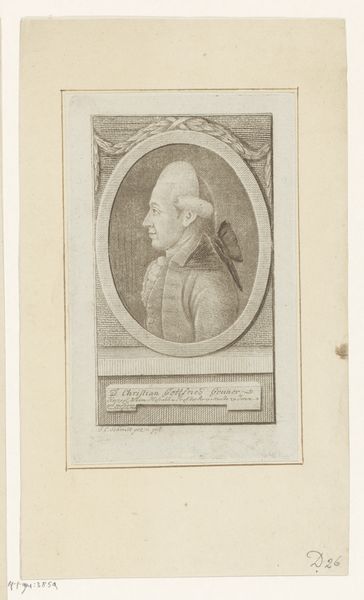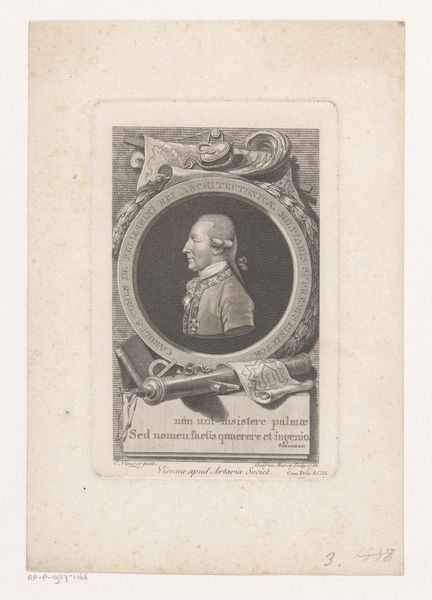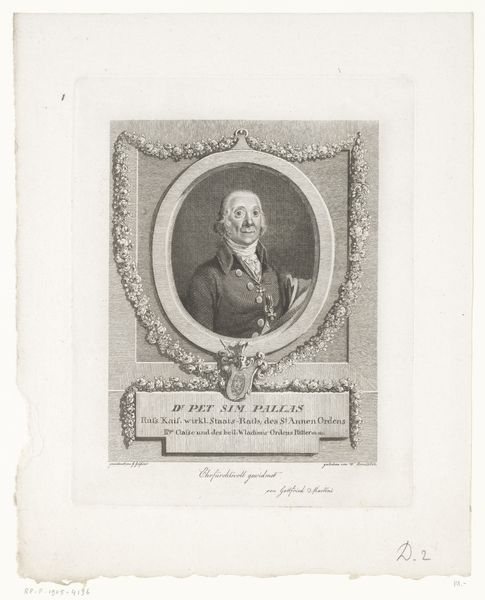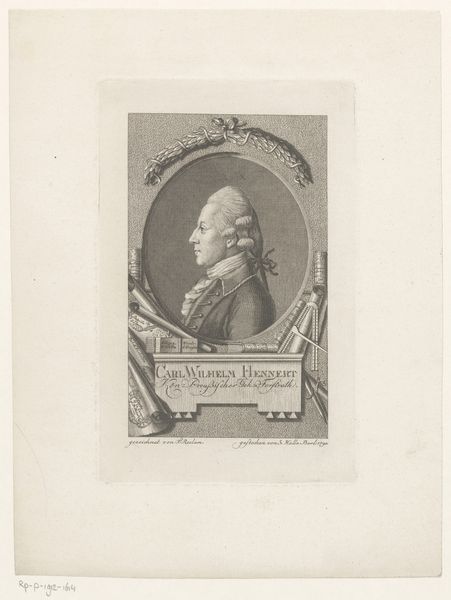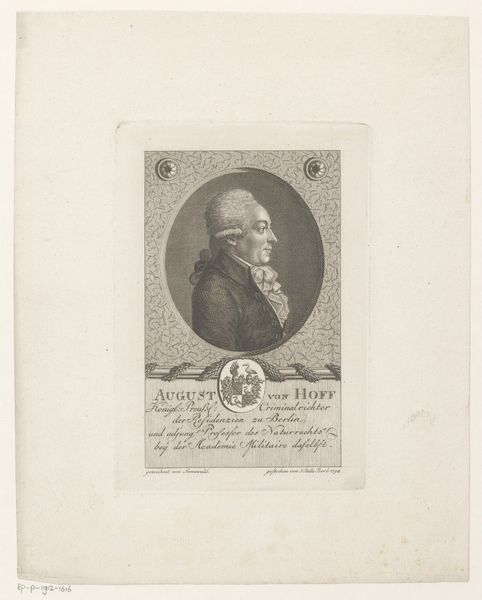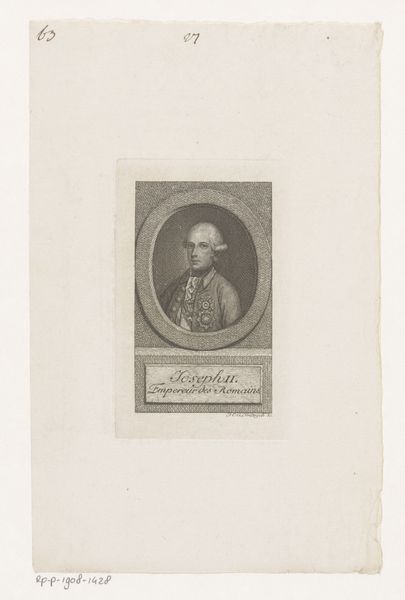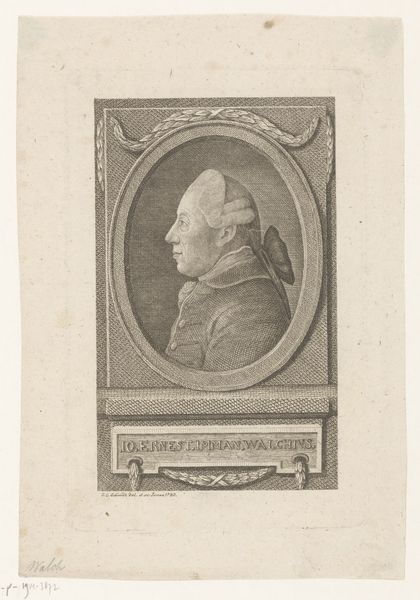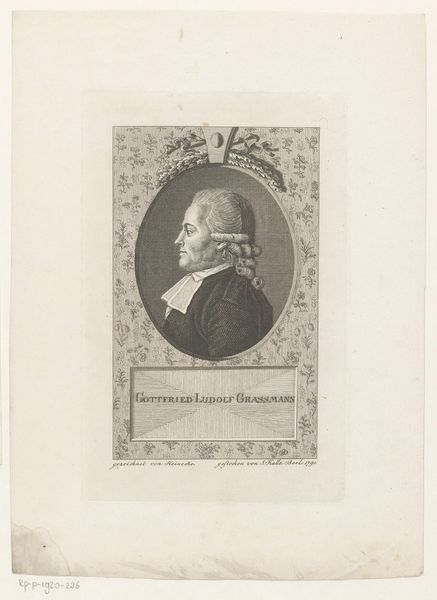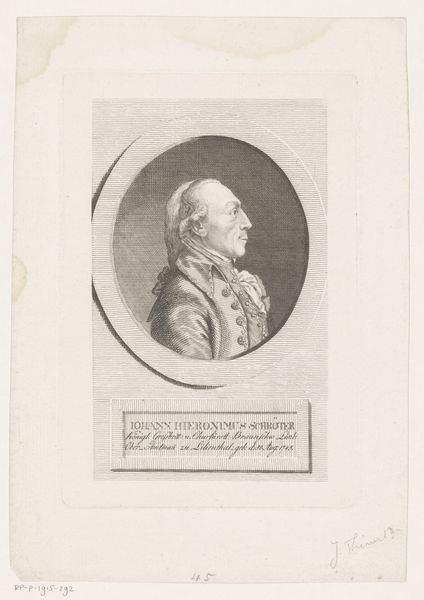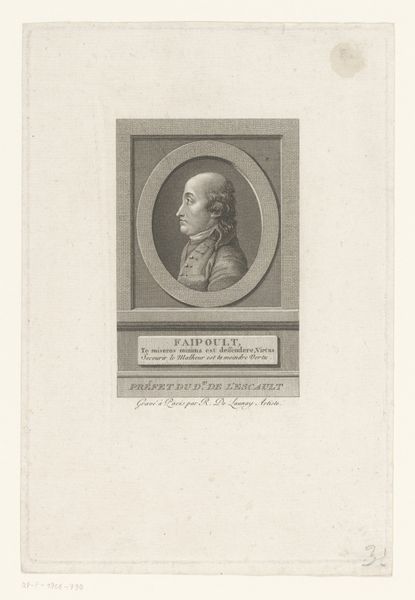
Dimensions: height 162 mm, width 102 mm
Copyright: Rijks Museum: Open Domain
Curator: The engraving we're looking at is titled "Portret van Maximilian Stoll," dating from between 1749 and 1796 and created by Johann Ernst Mansfeld. It's a striking example of Baroque portraiture using a printmaking technique. Editor: My first thought? A tightly wound spring. The lines are so precise, almost scientific, yet there’s a certain tension in his profile. He looks like he's about to either cure you or give you a stern lecture about personal hygiene. Curator: The sitter, Maximilian Stoll, was a prominent physician, and it was common during this period to commission portraits that communicated not just likeness but also status and intellectual gravitas. The inscription below, if you can see it in detail, notes his various roles, including professor of practical medicine at the university. It tells you just how much importance society placed on formal titles and position. Editor: Absolutely. The whole composition, contained within this sort of fussy, frilly frame, speaks to the controlled world he inhabited. The engraver uses line weight brilliantly to suggest volume and texture but it all feels so proper. I mean, did they ever loosen their collars back then, or did they sleep in those powdered wigs? Curator: Well, artistic representations often smoothed out the messiness of daily life. This engraving circulated his image and by extension the importance of medicine and scientific thinking, solidifying both in the public eye. Consider the distribution methods too, available to elite individuals—these portraits bolstered reputations through strategic gifting and display. Editor: It does make you wonder about the "real" Maximilian Stoll, the human being. Beyond the wig and the titles, what were his fears, his passions? Does his dedication to scientific pursuits, so starkly apparent here, overshadow what makes us truly alive? Curator: Perhaps. But this artwork's power lies in its role as a cultural document. It opens up insights into 18th-century societal values, the burgeoning scientific revolution, and portraiture’s function beyond pure aesthetics. Editor: Fair enough. And, you know, despite the rigidity, there's still a glimmer of something in his eye. Perhaps a hint of mischief or intellectual curiosity. Makes you wonder. Anyway, I am intrigued to know more about his approach to medicine!
Comments
No comments
Be the first to comment and join the conversation on the ultimate creative platform.
